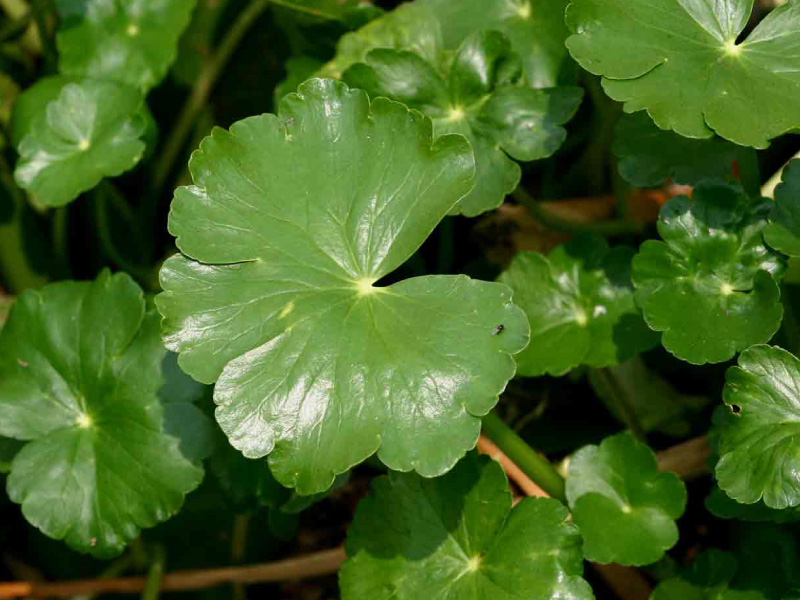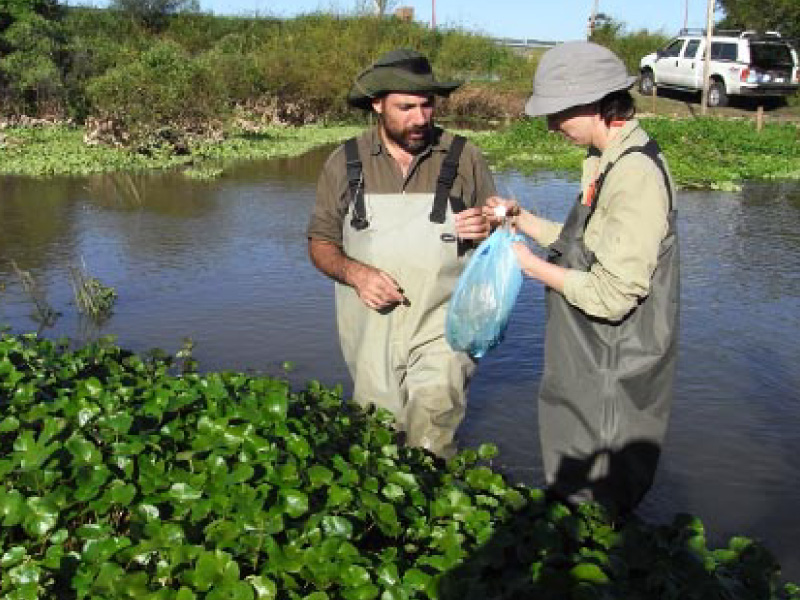21 May Hydrocotyle ranunculoides (Floating pennywort)
Hydrocotyle ranunculoides (Floating pennywort)
Floating pennywort is an aquatic plant native to the Americas. It was introduced in Europe in the 1980s, and is currently invasive in several countries. FuEDEI researchers identified several natural enemies, among which the weevil Listronotus elongatus was considered the most promising potential biocontrol agent.
The floating pennywort, Hydrocotyle ranunculoides (Araliaceae), is an aquatic plant native to South and Central America, and possibly North America as well. It thrives in stagnant or slow-moving fresh water. It can reproduce both sexually and asexually, and under optimal conditions it may increase its biomass exponentially. The dense mats prevent light penetration, navigation, and normal water flow, stimulating eutrophication, oxygen depletion, local extinction of flora and fauna and water pollution. Several specialized organisms attack this floating pennywort (Cabrera Walsh et al. 2013), among which the weevil Listronotus elongatus (Curculionidae) was found to be damaging and specific enough to be considered as a biocontrol agent.
Personal a cargo:
Willie Cabrera
Cooperadores:
Djamila Djeddour, Marion Seier, y Richard Shaw – CABI-Europe.


